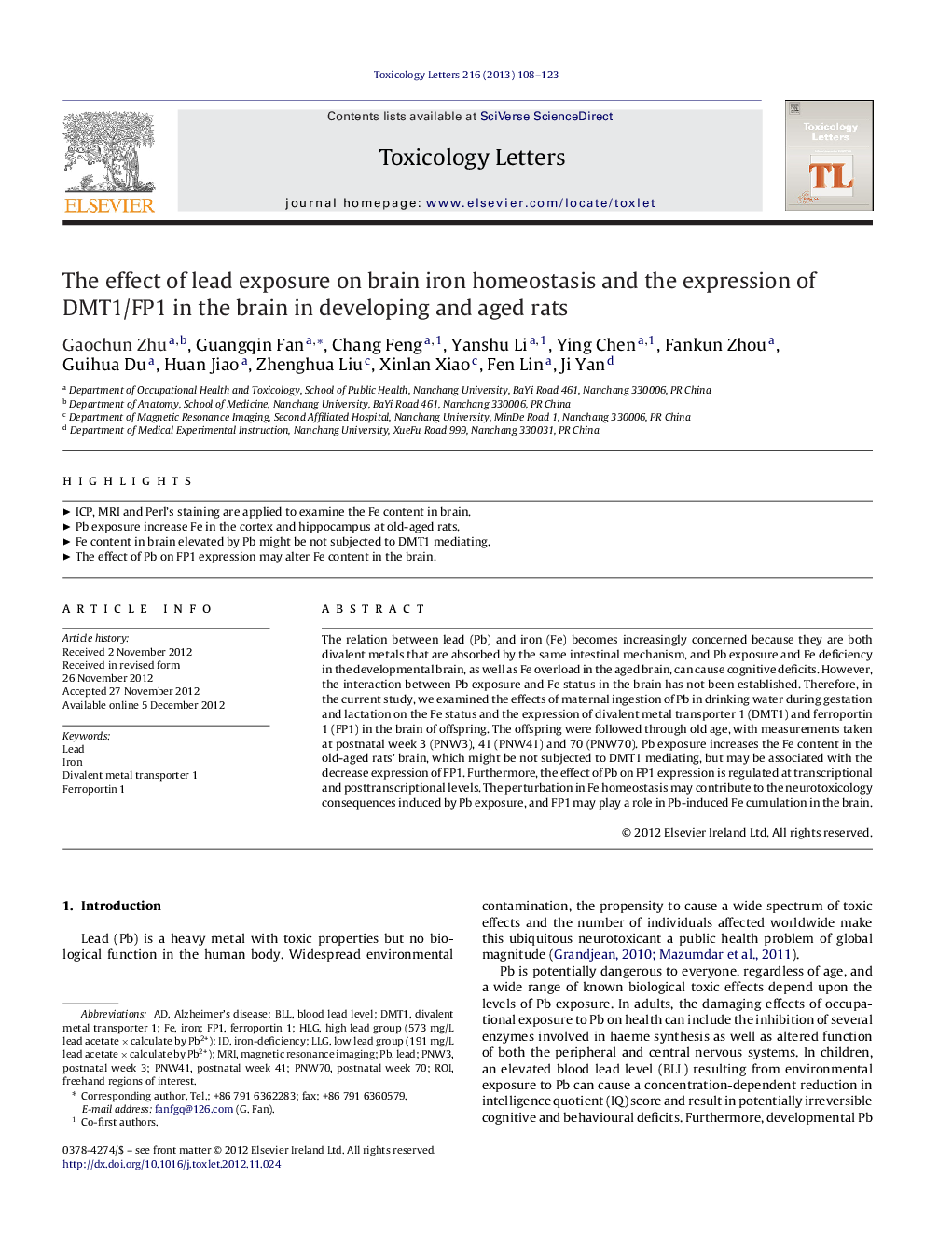| Article ID | Journal | Published Year | Pages | File Type |
|---|---|---|---|---|
| 2599460 | Toxicology Letters | 2013 | 16 Pages |
The relation between lead (Pb) and iron (Fe) becomes increasingly concerned because they are both divalent metals that are absorbed by the same intestinal mechanism, and Pb exposure and Fe deficiency in the developmental brain, as well as Fe overload in the aged brain, can cause cognitive deficits. However, the interaction between Pb exposure and Fe status in the brain has not been established. Therefore, in the current study, we examined the effects of maternal ingestion of Pb in drinking water during gestation and lactation on the Fe status and the expression of divalent metal transporter 1 (DMT1) and ferroportin 1 (FP1) in the brain of offspring. The offspring were followed through old age, with measurements taken at postnatal week 3 (PNW3), 41 (PNW41) and 70 (PNW70). Pb exposure increases the Fe content in the old-aged rats’ brain, which might be not subjected to DMT1 mediating, but may be associated with the decrease expression of FP1. Furthermore, the effect of Pb on FP1 expression is regulated at transcriptional and posttranscriptional levels. The perturbation in Fe homeostasis may contribute to the neurotoxicology consequences induced by Pb exposure, and FP1 may play a role in Pb-induced Fe cumulation in the brain.
► ICP, MRI and Perl's staining are applied to examine the Fe content in brain. ► Pb exposure increase Fe in the cortex and hippocampus at old-aged rats. ► Fe content in brain elevated by Pb might be not subjected to DMT1 mediating. ► The effect of Pb on FP1 expression may alter Fe content in the brain.
